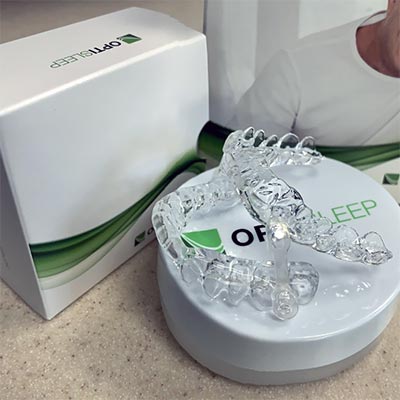Obstructive Sleep Apnea
When we sleep, the muscles and soft tissue at the back of the mouth and throat relax. Snoring results from the vibrations of these tissues while breathing through the partially obstructed airway. Occasional, intermittent snoring is normal for adults and children.
Obstructive Sleep Apnea is indicated by frequent, loud snoring with brief pauses in breathing several times during the night. For patients with OSA, the airway is completely blocked, effectively stopping the flow of air. The brain signals the patient to wake just enough to resume breathing, resulting in interrupted, restless sleep.
Continued disruption of sleep can cause fatigue, daytime sleepiness, memory and concentration problems, frequent headaches, or changes in mood. Sleep apnea patients may also be at higher risk of developing cardiovascular issues, including high blood pressure and heart disease.
Oral Appliances for Treatment of OSA
Sleep apnea oral appliances fit comfortably over your upper and lower teeth. Oral sleep appliances have connector supports on each side that gently adjust the position of the lower jaw slightly forward to prevent obstruction of the upper airway during sleep. The tongue and soft tissue of the mouth and throat are kept open allowing for improved air flow and more restful sleep.
This non-surgical approach for treatment of sleep apnea is a welcome alternative for those who do not tolerate CPAP therapy well, or find CPAP machines cumbersome and uncomfortable to wear.

